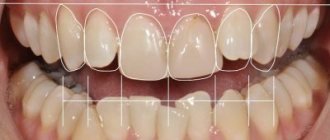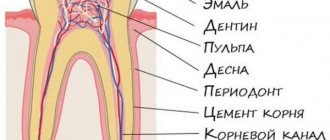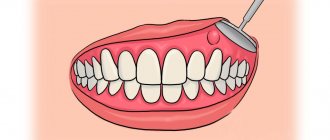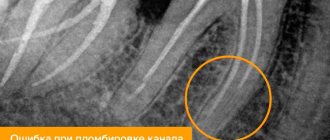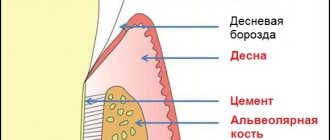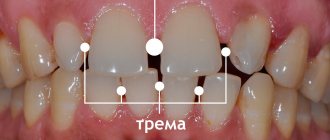- general information
- Compound
- Advantages of the drug
- Flaws
- Mode of application
- Review of manufacturers
- Price
Almost all patients, having decided on artificial restoration of teeth through prosthetics, know little about the materials used during the operation. Perhaps very few people know that there are a huge number of cement composites, each of which is designed for a particular clinical case. What is glass ionomer cement, what are its features and advantages, manufacturing specifics and varieties - this material is dedicated to this.
When is a temporary filling required?
A temporary filling is much inferior to a permanent one in terms of strength and durability. It is only needed for a couple of days to keep food and other substances out of the tooth cavity between visits to the dentist. Such a filling can be installed in the following cases:
- — If the root canal treatment was lengthy and the installation of a permanent filling is postponed to the next visit.
- — A temporary filling can serve to hold medication placed in the tooth cavity.
- — If the doctor is not sure that the nerve remains intact. Waiting some time will help you understand whether the tooth can be covered with permanent material.
General information about glass ionomer cement
Glass ionomer cements (hereinafter referred to as GIC) are the latest innovative mixtures characterized by a heterogeneous structural content, where the base part is aluminosilicate glass, and polyacrylic acids act as a polymer matrix.
GIC is the optimal solution for placing fillings on a temporary basis, as well as being used as insulating liners.
Initially liquid in consistency, the mass gradually hardens and takes on the desired state. This happens in several stages:
- dissolution – the process of formation of ions;
- gelation – creation of gel-polymer chains, increase in pH level. The duration of the transition to this state is about 5 minutes;
- complete hardening of the material occurs within 24 hours.
The mixture reacts well with hard tooth tissues, intensely releasing fluoride elements. It is characterized by an average degree of strength, interacts better with enamel than with dentin tissue, and has an inhibitory effect on previously formed caries manifestations.
Types of temporary fillings
There are several options for temporary fillings:
- — Water-based artificial dentin. It is a mixture of distilled water and powder (zinc sulfate, zinc oxide, kaolin). The doctor brings the filling material to the desired consistency by adding water.
- — Oil-based dentin. The composition of such artificial dentin is the same, but not with water, but with clove or peach oil. The material does not need to be mixed; it is sold ready-made.
- — Special cement. There are several material options. It is used for teeth exposed to chewing stress. The product also serves as a gasket when filling canals.
- Polymers. The rubber-like paste, which hardens when exposed to light, is a durable material that adheres well to the surface of the tooth.
Method of using glass ionomer cement
The algorithm for using standard glass ionomer cements is as follows:
- thorough treatment of the working area with a conditioning liquid, which is washed off 20 seconds after application and the cavity is well dried;
- the damaged tooth is isolated from moisture and salivary secretions for the entire period of setting of the mass - about 5 - 6 minutes;
- the liquid and powder composition are mixed until a shiny, homogeneous thick mass is obtained;
- they place it in the organ cavity and form a filling, while ensuring dense condensation using a cotton swab or a special device with a spherical movable working tip;
- after giving the filling the desired shape, its relief is coated with varnish;
- after 1 – 2 days, treat with a drill. After this, the tooth can function normally.
Is it possible to install a temporary filling yourself?
The installation of fillings should only be entrusted to a doctor. The fact is that, for all its rigidity, the tooth is very easily susceptible to infection. If you close a cavity in a tooth without proper preparation, there is a high probability of infection and the development of serious complications. The simplest thing is inflammation of the pulp, or pulpitis. In serious cases, the patient may lose a tooth and even harm neighboring ones if the inflammation spreads.
The desire to fill a tooth with temporary material may arise if a permanent or temporary filling falls out or a piece of the crown part of the tooth breaks off. In these cases, you need to make an appointment with a doctor as soon as possible, and while waiting for the visit, avoid getting food into the resulting cavity and follow simple rules.
Disadvantages of glass ionomer cement
The material is not without its shortcomings, some of which are quite significant:
- long maturation of the cement composition - it completely hardens only a day after installation, despite the fact that the first setting occurs within a few minutes;
- in the first hours the mixture is sensitive to a humid environment - it is at that stage that active leaching of ions occurs, which slows down the processes of final polymerization;
- poor resistance of the structural content to mechanical vibration - the material cannot be affected by a conventional drill immediately after installing the filling;
- etching of organ tissue is unacceptable;
- limited use for complex caries with a deep damaging effect;
- poor resistance to diametric tension, which completely excludes the use of GIC for the treatment of occlusal surfaces, as well as in clinical situations when the load on the tooth is distributed in different directions;
- shorter service life compared to conventional cement composite;
- average level of aesthetics, which limits its use on the frontal areas of the jaw row.
What to do if there is a hole in your tooth?
Some manipulations will help you wait for a visit to the doctor without complications:
- First of all, it is important to prevent the accumulation of food debris and plaque inside the tooth. The danger is that bacteria developing in dental plaque release acids that are destructive to teeth.
- If your tooth hurts, you can take a painkiller.
- It would be a good idea to rinse with a warm soda solution.
- It is better to limit chewing on the painful side so as not to provoke an attack of pain.
- There is no need to cover the cavity with cotton wool, plasticine and other improvised means. This can cause complications and the development of infection.
Overview of glass ionomer cement manufacturers
Despite the fact that the composition of the GICs of the main manufacturers is almost identical, the following line of leading manufacturers are distinguished in the domestic market of dental materials, firmly holding the rating for a long period of time. It is advisable to consider the features in more detail.
Arde Kwik Tsem
It is a fluid hybrid mixture of a double solidification principle. Ideal for attaching veneers, bridge devices, and inserting pins during restoration with implants.
Thanks to its unique structural content and viscous consistency, it ensures the highest quality filling of the tooth cavity.
It has a serious disadvantage - it can provoke individual intolerance and cause allergic reactions of varying degrees of intensity.
Arde Fix
It is used for permanent fixation of orthodontic and prosthetic devices. Not prone to dissolution and oxidation in the oral cavity. If the composition is mixed correctly, side effects and complications are completely excluded. May cause a short-term decrease in the sensitivity of taste buds, which resolves spontaneously after some time. It does not tolerate the presence of eugenol elements in the work area.
Fuji Plus
A distinctive feature of the mixture is its modification with a composite, which provides a number of advantages:
- stronger fixation;
- possibility of use when interacting with metal, non-metal, ceramic prosthetic structures of all types in the process of orthopedic manipulations.
The disadvantage is the weaker light reflectivity of the material in the solid state.
Ketak Tsem
The main advantage is simplicity and ease of use. Shorter time for manual mixing and bringing to the required consistency.
It has high aesthetic indicators - a matte, slightly silky surface, which is especially important when working on the frontal area of the jaw.
The disadvantage is sensitivity to low temperatures, which increase the hardening time.
Tsemion F
The composition has good radiopacity, withstands high mechanical loads in comparison with analogue products, and has a low solubility index.
Adhesive to enamel and dentin tissues.
Allows you to achieve a high level of marginal sealing, releases fluoride over a longer period of time, which helps strengthen tooth enamel. It has a low pain sensitivity threshold and causes virtually no discomfort in patients during the rehabilitation period after treatment.
Expert opinion
Lyubov Ivanovna Kopylova
dentist-therapist
Experience: more than 10 years
Temporary filling at home is an option for those who cannot get to the doctor for quality caries treatment. This is not an alternative method of dental treatment and is not an option for those who want to save money on visiting a doctor. Caries can be cured only in a dental clinic, using modern equipment for removing pathological tissue and high-quality filling material. It is important to understand that the temporary filling that you put on yourself does not stop the destructive process!
Enamel
It is the strongest and hardest tissue of the human body. It consists of almost 100% minerals and performs protective functions for both dentin and pulp. Its thinnest layer is located at the neck of the tooth, and its thickest is on the chewing tubercles. The strength of enamel is not a constant value, as it changes throughout the entire period from the beginning of tooth growth to its end. After tooth eruption, the enamel is much weaker than after a couple of years, as a result of the mineralization process. As the years pass, the strength of the fabric still decreases. This process depends on a large number of factors. Also, enamel has different strength depending on the area of the tooth. And this indicator is also individual. But there is one common feature: the top layer of fabric is always the most durable, it is uniform in structure, and has little porosity. The closer the enamel layer is to dentin, the looser it is in structure and, accordingly, has lower strength.
Prevention of caries
The easiest way to avoid fillings or minimize the number of fillings is to visit your dentist regularly. This should be done at least once every six months. Simple tips will also help keep your teeth healthy:
- Careful hygiene. You need to brush your teeth with a high-quality brush and toothpaste at least twice a day.
- Using dental floss will help remove plaque from hard-to-reach places.
- Rinsing with special liquids will also help keep your gums healthy, which play a huge role in keeping your mouth healthy.
- A balanced diet will help ensure you have enough vitamins and minerals to keep your teeth strong.
Now we treat teeth even better!
Treatment, re-treatment of canals, elimination of caries under a microscope without damaging healthy tooth tissue.
We do everything to save your own tooth. Consultation with specialists is FREE!
More details
Dentine
The bone substance of the tooth is its main part. Dentin performs an important function as it protects the pulp from external irritants. Having a loose structure, the bone substance of the tooth ranks second in strength in the body after enamel. The composition of this tissue is 2/3 inorganic substances, 1/5 collagen and 10% water. If you look at dentin under a microscope, you can see that it is a substance that is unevenly covered with calcareous deposits. A huge number of dentinal tubules filled with nerve endings of the pulp pass through it. There are 3 types of bone substance of the tooth: 1. Primary dentin, the formation of which begins even before the first eruption of the tooth. 2. Secondary or physiological, it is formed after the appearance of the tooth. It is characterized by a chaotic arrangement of dentinal tubes and fibers, and their smaller number. 3. Tertiary or, as it is also called, replacement, it is formed as a result of tissue irritation. It is characterized by an uneven appearance with slight mineralization. Dentinal tubules are most often absent in this type. The formation of dentin is individual and depends on numerous factors. This process can be influenced, for example, by tooth wear or other defects, as a result of which dentin replacement occurs at different rates of intensity.
